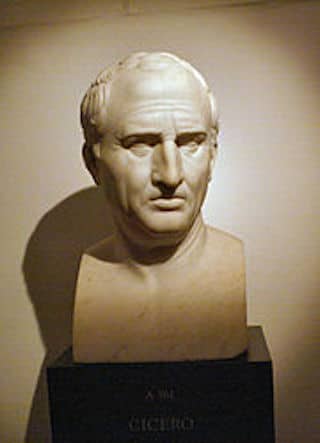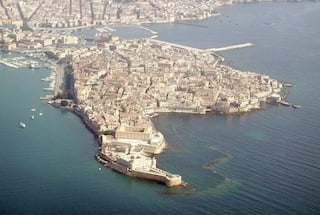

Dale Carnegie’s Public Speaking classes or Toastmasters are nothing new, it goes all the way back to the evil Sophists. I’m not saying that Dale Carnegie or Toastmasters is evil, but they can certainly be used wickedly, look at politicians.
In the beginning, organizations like Toastmasters were good because it taught people communication techniques which increased their self-confidence. It also made their speech more interesting and people could understand what they were saying.
Today, it appears that it doesn’t matter how great one’s communication techniques are because most of the public are too stupid to understand what you are trying to tell them. Why was Obama re-elected? Why would anyone even think to vote for Hillary Clinton? Need I say more?
It’s a shame that today we don’t have the teachers they had back then. Tomorrow we’ll look at…
Acts 16
The Selection of Timothy

For the Romans, oration became an important part of public life. Cicero (106-43 BC) was chief among Roman rhetoricians and remains the best known ancient orator and the only orator who both spoke in public and produced treatises on the subject.
Rhetorica ad Herennium, formerly attributed to Cicero but now considered to be of unknown authorship, is one of the most significant works on rhetoric and is still widely used as a reference today. It is an extensive reference on the use of rhetoric, and in the Middle Ages and Renaissance, it achieved wide publication as an advanced school text on rhetoric.
1 Then came he to Derbe and Lystra: and, behold, a certain disciple was there, named Timotheus, the son of a certain woman, which was a Jewess, and believed; but his father was a Greek:
2 Which was well reported of by the brethren that were at Lystra and Iconium.
3 Him would Paul have to go forth with him; and took and circumcised him because of the Jews which were in those quarters: for they knew all that his father was a Greek.
4 And as they went through the cities, they delivered them the decrees for to keep, that were ordained of the apostles and elders which were at Jerusalem.
5 And so were the churches established in the faith, and increased in number daily.
6 Now when they had gone throughout Phrygia and the region of Galatia, and were forbidden of the Holy Ghost to preach the word in Asia,
7 After they were come to Mysia, they assayed to go into Bithynia: but the Spirit suffered them not.
“Mysia” – in the northwest part of the province of Asia. Luke used thee Hellenistic names, but Paul preferred the provincial (Roman) names.
“Bithynia” – a sensational province formed after 74 B.C., it was east of Mysia.
8 And they passing by Mysia came down to Troas.
“Troas” – located ten miles from ancient Troy. Alexandria Troas (its full name) was a Roman colony and an important seaport for connections between Macedonia and Greece on the one hand and Asia Minor on the other.
Paul returned to Troas following his work in Ephesus on his third journey. At some time – on Paul’s second journey or on his third – a church was started there, for Paul ministered to believers in Troas when he returned from his third journey on his way to Jerusalem.
9 And a vision appeared to Paul in the night; There stood a man of Macedonia, and prayed him, saying, Come over into Macedonia, and help us.
“Man of Macedonia” – Macedonia had become a Roman province in 148 B.C. There is no indication that the man of the vision is Luke, as some have suggested, but he does join the group at this point.

10 And after he had seen the vision, immediately we endeavored to go into Macedonia, assuredly gathering that the Lord had called us for to preach the gospel unto them.
11 Therefore loosing from Troas, we came with a straight course to Samothracia, and the next day to Neapolis;
“Samothracia” – an island in the northeastern Aegean Sea. It was a convenient place for boats to anchor rather than risk sailing at night.
“Neapolis” – the seaport for Philippi, ten miles away; modern Kavalla.
12 And from thence to Philippi, which is the chief city of that part of Macedonia, and a colony: and we were in that city abiding certain days.
“Philippi” – a city in eastern Macedonia named after Philip II, father of Alexander the Great. Since it was a Roman colony it was independent of provincial administration and had a governmental organization modeled after that of Rome.
Many retired legionnaires from the Roman army settled here, but few Jews.

The city is notable for its rich Greek history, culture, amphitheatres, architecture, and as the birthplace of the preeminent mathematician and engineer Archimedes.
This 2,700-year-old city played a key role in ancient times, when it was one of the major powers of the Mediterranean world.
Syracuse is located in the southeast corner of the island of Sicily, right by the Gulf of Syracuse next to the Ionian Sea.
The city was founded by Ancient Greek Corinthians and Teneans and became a very powerful city-state.
Syracuse was allied with Sparta and Corinth, exerting influence over the entire Magna Graecia area of which it was the most important city.
Once described by Cicero as “the greatest Greek city and the most beautiful of them all”, it later became part of the Roman Republic and Byzantine Empire.
After this Palermo overtook it in importance, as the capital of the Kingdom of Sicily.
Eventually the kingdom would be united with the Kingdom of Naples to form the Two Sicilies until the Italian unification of 1860.
“Chief city” – Thessalonica was the capital of Macedonia. But Macedonia had four districts, and Philippi was in the first of these.
13 And on the sabbath we went out of the city by a river side, where prayer was wont to be made; and we sat down, and spake unto the women which resorted thither.
14 And a certain woman named Lydia, a seller of purple, of the city of Thyatira, which worshipped God, heard us: whose heart the Lord opened, that she attended unto the things which were spoken of Paul.
“Lydia” – a business woman. Her name may be associated with her place of origin, the Hellenistic district of Lydia.
“Thyatira” – in the Roman province of Asia, 20 miles southeast of Pergamum (in the Hellenistic kingdom of Lydia). It was famous for its dyeing works, especially royal purple (crimson).
15 And when she was baptized, and her household, she besought us, saying, If ye have judged me to be faithful to the Lord, come into my house, and abide there. And she constrained us.
16 And it came to pass, as we went to prayer, a certain damsel possessed with a spirit of divination met us, which brought her masters much gain by soothsaying:
“A spirit of divination” – a “python” spirit, a demonic spirit. The python was a mythical snake worshiped at Delphi and associated with the Delphic oracle. The term “python” came to bused of the persons through whom the python spirit supposedly spoke.
Since such persons spoke involuntarily, the term “ventriloquist” was used to describe them. To what extent she actually predicted the future is not known.
17 The same followed Paul and us, and cried, saying, These men are the servants of the most high God, which shew unto us the way of salvation.
18 And this did she many days. But Paul, being grieved, turned and said to the spirit, I command thee in the name of Jesus Christ to come out of her. And he came out the same hour.
19 And when her masters saw that the hope of their gains was gone, they caught Paul and Silas, and drew them into the marketplace unto the rulers,
20 And brought them to the magistrates, saying, These men, being Jews, do exceedingly trouble our city,
“Magistrates” – the Greek term strategos (Latin praetor), not the usual word but a term of courtesy used in some Roman colonies, such as Philippi.
21 And teach customs, which are not lawful for us to receive, neither to observe, being Romans.

Some scholars contend that both founders are merely legendary personages, others that Corax and Tisias were the same person, described in one fragment as “Tisias, the Crow” (corax is ancient Greek for “crow”).
Corax is said to have lived in Sicily in the 5th century BCE, when Thrasybulus, tyrant of Syracuse, was overthrown and a democracy formed.
Under the despot, the land and property of many common citizens had been seized; these people flooded the courts in an attempt to recover their property.
“Customs…not lawful” – if a religion failed to receive Roman approval, it was considered religio illicita. Judaism had legal recognition, but Christianity did not.
22 And the multitude rose up together against them: and the magistrates rent off their clothes, and commanded to beat them.
23 And when they had laid many stripes upon them, they cast them into prison, charging the jailor to keep them safely:
24 Who, having received such a charge, thrust them into the inner prison, and made their feet fast in the stocks.
25 And at midnight Paul and Silas prayed, and sang praises unto God: and the prisoners heard them.
26 And suddenly there was a great earthquake, so that the foundations of the prison were shaken: and immediately all the doors were opened, and every one’s bands were loosed.
27 And the keeper of the prison awaking out of his sleep, and seeing the prison doors open, he drew out his sword, and would have killed himself, supposing that the prisoners had been fled.
28 But Paul cried with a loud voice, saying, Do thyself no harm: for we are all here.
29 Then he called for a light, and sprang in, and came trembling, and fell down before Paul and Silas,
30 And brought them out, and said, Sirs, what must I do to be saved?
31 And they said, Believe on the Lord Jesus Christ, and thou shalt be saved, and thy house.
32 And they spake unto him the word of the Lord, and to all that were in his house.
33 And he took them the same hour of the night, and washed their stripes; and was baptized, he and all his, straightway.

However, some recent research has indicated that this Second Sophistic, which was previously thought to have very suddenly and abruptly appeared in the late 1st century, actually had its roots in the early 1st century.
It was followed in the 5th century by the philosophy of Byzantine rhetoric, sometimes referred to as the “Third Sophistic.
34 And when he had brought them into his house, he set meat before them, and rejoiced, believing in God with all his house.
35 And when it was day, the magistrates sent the sergeants, saying, Let those men go.
36 And the keeper of the prison told this saying to Paul, The magistrates have sent to let you go: now therefore depart, and go in peace.
37 But Paul said unto them, They have beaten us openly uncondemned, being Romans, and have cast us into prison; and now do they thrust us out privily? nay verily; but let them come themselves and fetch us out.
“Uncondemned” – public beating for a Roman citizen would have been illegal, let alone beating without a trial.
38 And the sergeants told these words unto the magistrates: and they feared, when they heard that they were Romans.
39 And they came and besought them, and brought them out, and desired them to depart out of the city.
40 And they went out of the prison, and entered into the house of Lydia: and when they had seen the brethren, they comforted them, and departed.
Debate and Rhetoric in the Ancient World
Although the ability to speak persuasively has always been important, the formal study of rhetoric may be traced back to the 5th century B.C.

Rhetoric is the art of discourse, an art that aims to improve the capability of writers or speakers that attempt to inform, persuade, or motivate particular audiences in specific situations.
Around 467 B.C. the tyrant Hieron died on the island of Syracuse, initiating a debate about land ownership among the inhabitants of the island.
A man named Corax used this debate as an opportunity to offer training in the art of courtroom disputation and persuasion. A number of the city’s inhabitants hired Corax as a private tutor, and the practice of systematic rhetoric was born.
Corax’s approach traveled to the cosmopolitan world of Athens, and rhetoric quickly became one of the most significant intellectual disciplines.
The most renowned group to embrace rhetoric was the Sophists, a society of philosophers who believed that useful opinion was far more significant than knowledge or truth. They established an educational system that taught young men the “art” of language and persuasion.
The Athenian political landscape, characterized at the time by change and unrest, offered the Sophists the opportunity to become quite wealthy in their pursuit. They prided themselves in their ability to debate from either side of an argument.

Aristotle (384-322 BC) was a student of Plato who famously set forth an extended treatise on rhetoric that still repays careful study today.
In the first sentence of The Art of Rhetoric, Aristotle says that “rhetoric is the counterpart [literally, the antistrophe] of dialectic.” As the “antistrophe” of a Greek ode responds to and is patterned after the structure of the “strophe” (they form two sections of the whole and are sung by two parts of the chorus), so the art of rhetoric follows and is structurally patterned after the art of dialectic because both are arts of discourse production.This fact, which demonstrated their relative view of truth and justice, coupled with the exorbitant fees the Sophists charged, led many Athenians to distrust them.
The Greek philosopher Plato held only disdain for Sophists, believing that rhetoric’s strength lay in its ability to attain and convey truth in the pursuit of justice—not in its power per se.
The most renowned advocate, however, of systematic rhetoric in the ancient world was Aristotle, who insisted that value and truth had to be a part of the rhetorical process.
A good rhetorician, he emphasized, needed to understand the argument as well as the human emotion surrounding it, maintain a worthy character, understand the relevant type of oratorical expression and be gifted with a natural persuasive ability.
The persuasive process, he insisted, was accomplished by employing one or more of the three categories of appeal:
* logos (reason),
* pathos (emotional appeal) and
* ethos (virtue and goodwill).
Whether he was spreading the gospel via spoken word or pen, it is obvious that the apostle Paul to some degree employed the rhetorical training he had most certainly received (2 Cor 5:11).
On the other hand, Paul was careful to avoid verbal trickery and insisted upon reliance on the power of God in winning people over (1 Cor 2:1-2).
Even though systematic rhetoric has often been criticized as immoral or unethical, it is important to appreciate its value when it is properly employed.
…Twenty influential figures in education.
Visits: 0
